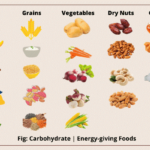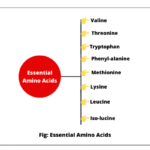What is Matter: Definition, Classification
Definition of Matter: Anything that has mass and occupies space (i.e. volume) is called matter. It is the things our universe is composed of and all objects in the universe follow to this definition.
All the surrounding objects in the universe, from rocks to pizza, are examples of matter. In other words, all the objects in the universe are composed of matter.
Matter is indestructible. The meaning of indestructible is that it can neither be created nor destroyed. But it can change its form. Thus, the total quantity of matter in the universe is constant. We measure the mass of an object with an instrument called beam-balance.
Here you will have noticed that our definition of matter uses the term mass rather than weight. The words mass and weight are often used interchangeably, even though they denote to different things. Let’s understand the difference between mass and weight with the help of examples.
Difference between Mass and Weight
Mass is the total quantity of matter present in a particular object. It denotes to how much matter there is in an object. The mass of a body or an object is always constant and does not change, regardless of where we measured it.
For example, a cricket ball contains a certain amount of matter and has a certain mass, which is the same regardless of any location. The mass of a body would be the same on the moon as it is on the earth.
We should not use the term weight in place of mass, as it has a different meaning. The term weight is the force with which an object is attracted towards earth because of gravity. In simple words, it is a force by which earth attracts an object towards it.
An object resting on earth experiences a force called its weight, W, that is equal to the product of its mass m and acceleration due to gravity g.
The mathematical formula is
W = mg
From the above mathematical formula, it is clear that the weight of an object depends on the value of “g” which varies from place to place. For example, the weight of a cricket ball on earth is about six times greater than it would be on the moon because the gravitational force of attraction of the earth is six times that of the moon.
Therefore, when we define a matter, we use mass rather than weight, because mass does not vary from place to place.
Classification of Matter
We can classify the matter into two categories. They are as:
- Physical classification
- Chemical classification

Let’s understand both classification with the help of examples.
Physical Classification of Matter
Matter can exist in anyone of three forms or states: solid, liquid and gas. The state of a substance is determined by the pressure and temperature. It may change with changes in temperature and /or pressure.
In the solid state, most substances are rigid (i.e. hard), but some (like waxes) are relatively soft. They have a definite shape, and fixed volume (size). There is a minimal effect of changes in temperature and pressure on their volumes.
In the solid state, the individual particles that compose a solid occupy fixed positions in the structure and are very near to each other. This is because there is not enough thermal energy to break the intermolecular force of attractions among the molecules of a substance. Therefore, solids have a rigid structure.
When we heat a solid substance, thermal energy increases that break the intermolecular force of attraction among the molecules. They are free to move and the matter gets converted into the liquid state.
Definition of thermal energy: It is the energy of the body (or substance) originating from the movement of its atoms or molecules. Thermal energy is directly proportional to the temperature of a substance.
Definition of Intermolecular force: It is the force of attraction existing among molecules of a substance (solid, liquid, or gas).
In the liquid state, substances have no definite shape (take the shapes of their container) and possess a fixed volume. They are fluid. There is a little effect of temperature and pressure on their volumes. The particles are free to move over each other, but are still nearer to one another because thermal energy balances the intermolecular force of attraction. This state of matter is associated with energy more than solids.
In a gaseous state, substances have no fixed shape (take the shape of its container) and volume. There is a large effect of temperature and pressure on their volumes. In any container, gases occupy the whole space available to them.
The molecules inside a gas are far apart from one another and move at very high speeds in all directions, with little or no attraction to each other. Gases are highly compressible because of large intermolecular space available among molecules. This form of matter is associated with maximum amount of energy than solid and liquid.
Thus, a substance can exist in anyone of three forms of matter depending on temperature and pressure. Now let’s move on to understand chemical classification.
Chemical Classification of Matter
Matter exists in nature as a chemical substance. We can divide chemical classification of matter into two groups. They are:
- Pure substances
- Mixtures
A pure substance is a distinct variant of matter. All samples of a pure substance from anywhere in the world have the same composition and chemical properties. For example, pure water is a pure substance, whereas sea water is not because different samples of sea water may contain a different quantity of dissolved substances.
Pure substances have fixed physical properties. Color, density, melting point, boiling point, hardness, ductility, thermal conductivity, etc. are physical properties. We commonly use these properties to check the purity of a substance.
There are two types of pure substances that are as:
- Elements
- Compounds
Elements are those substances that cannot be broken down into simpler substances by chemical reactions. They are the most basic forms of matter that exist under ordinary conditions. Sodium and chlorine are two examples of elements. Other familiar examples are iron, aluminum, sulfur, and carbon. At room temperature, some elements exist in the form of gases. Examples are oxygen, hydrogen, nitrogen, chlorine, and helium.
Compounds are those substances that can be broken down (or decomposed) into simpler substances (i.e. elements) by chemical reactions. They exist in the more complex forms of matter. They are composed of two or more different elements and are chemically combined. For example, water is a compound that decomposes into hydrogen and oxygen when electricity passed through it. Other familiar examples of compounds are salt and sugar.
Most of the substances (or materials) found in nature are as mixtures. A mixture consists of two or more substances that have not a fixed composition. The component of a mixture can be present in it at any ratio. Most familiar example of the mixture is air and seawater.
There are two types of mixtures that are as:
- Heterogeneous mixture
- Homogeneous mixture
A homogeneous mixture is a type of mixture that has the same properties throughout a sample. Although, the properties of different samples can be unlike. Examples of a homogeneous mixture are seawater, sugar, wine, air, etc.
A heterogeneous mixture is a type of mixture in which the properties are not the same throughout a sample. The best examples of heterogeneous mixtures are ice-water, smoke, paper, etc. We can separate both mixtures into their components (pure substances) by mechanical and physical methods.
In this tutorial, you have known about what is matter, definition of matter, and its classification: physical and chemical. Hope that you will have understood the basic points of matter and its physical and chemical classification.
Thanks for reading!!!






